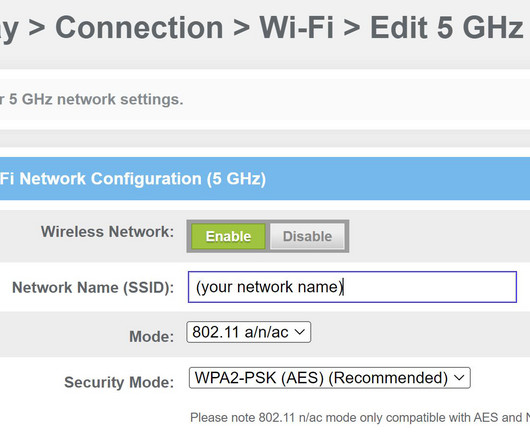How to Configure a Router to Use WPA2 in 7 Easy Steps
eSecurity Planet
MARCH 3, 2023
Most of us connect our mobile devices to a Wi-Fi router for internet access, but this connection can leave our network and data vulnerable to cyber threats. WPA2 is a security protocol that secures wireless networks using the advanced encryption standard (AES). Step 6: Reboot Reboot your router, if necessary, to apply the changes.













Let's personalize your content